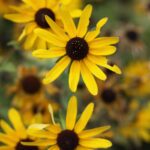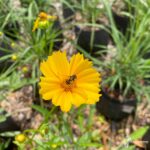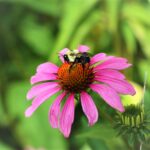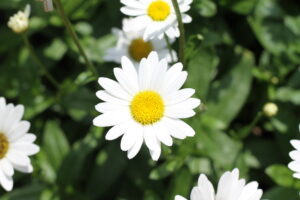
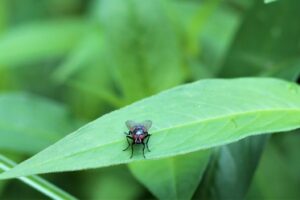
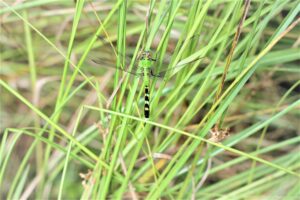
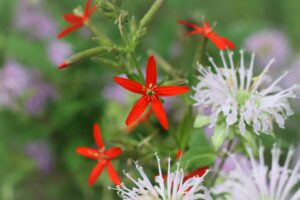
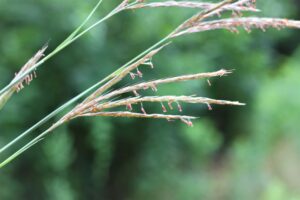
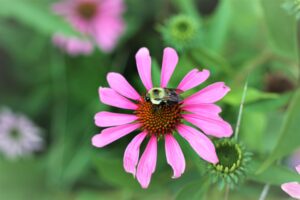
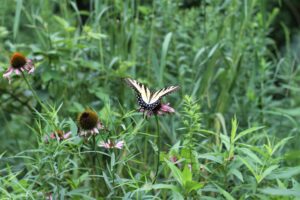
A native plant is a species of plant that occurs naturally in a region or ecosystem. These are species that have existed in a region for centuries, before any settlement occurred. Over time, these plants have adapted to the ecosystem in which they grow.
Native plants have adapted their structure and function to the climate and location in which they grow. Native plants have co-evolved with other plants, insects, mammals, birds, reptiles and amphibians forming a biological community in which they depend on each other.
“The federal definition of invasive species is a non-native species whose introduction causes or may cause economic or environmental harm or harm to human health.” Approximately 25% of plant species (outside of cultivation) in Indiana are non-native. While most are harmless, some cause trouble in the ecosystems in which they reside.
An invasive species of plant is one that has been introduced to an ecosystem and does not occur naturally. These types of plants are not adapted to a region which means they do not have that interdependence like native species. Adaptions of invasive plants allow them to outcompete native species for space and resources, causing a disruption in the ecosystem.
You can learn more about invasive species of plants in Indiana by visiting the Indiana Invasive Species Council website.
Native plants provide many benefits for an ecosystem:
- Native plants can be aesthetically pleasing, providing beauty to a landscape.
- Native plants can add biodiversity to a landscape which increases the overall health of an ecosystem.
- Having deep roots allows native plants to help infiltrate stormwater into the ground, preventing less runoff.
- Those same deep roots along with providing a perennial cover help to stabilize soil, preventing erosion.
- Acting as filters above and below ground, native plants help clean stormwater before it enters the groundwater or local waterways.
- Since native plants are naturally adapted to local climates, they can handle the fluctuations of temperature, light, and water better than an ornamental non-native.
- Native plants provide food and habitat for other native animal species (birds, bees, butterflies, mammals, etc.)
The first step in determining if a plant is native is by properly identifying it. The Indiana Native plant society has a great page on resources for identifying plants. In a world full of technology it is easy to point your cellphone camera and get an ID quickly and effectively. Some of these digital resources include Picture This, iPhone camera, Google lens on a smartphone or tablet, iNaturalist app, and many more.
Once you have identified the plant, you can see if the plant is on the list of invasive species in Indiana on the Indiana Invasive Species Council website.
Congratulations on your new flower pot full of goodness! Here are some tips for caring for your seed starts:
Indoor Care
- Put the pot in a sunny, warm location such as a window sill.
- Leave the plastic covering the pot until seedlings emerge. This helps to keep heat and moisture in to dissolve the seed coating allowing the seeds to germinate.
- Once seedlings have emerged open the top of the bag.
- Keep the soil moist, but not soggy.
Planting Outdoors
- Once there is no danger of frost (mid to end of May) take the pot out of the bag, dig a hole twice the size of the pot and put the seedlings (pot and all) into the soil. Even if you don’t see any seedlings, you can still proceed to the next steps.
- When planting, cover the seedlings with soil up to the level they are in the pot. Covering the seedlings too deep may smother them.
- Water the seedlings regularly until they are well established.
- Some seeds require a freezing and thawing cycle and may emerge after the following winter. Next year, you may get a new species growing!
Questions?
Do you have questions about native plants or caring for your seeds? Email us at elkcoswcd@elkhartcounty.com
